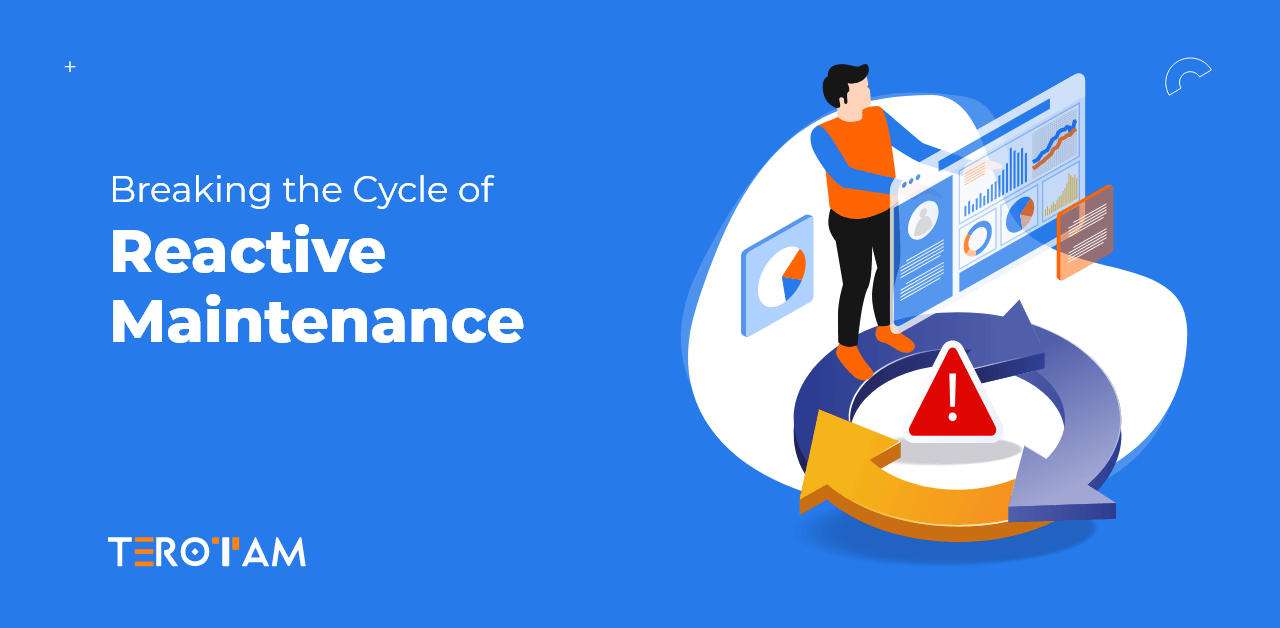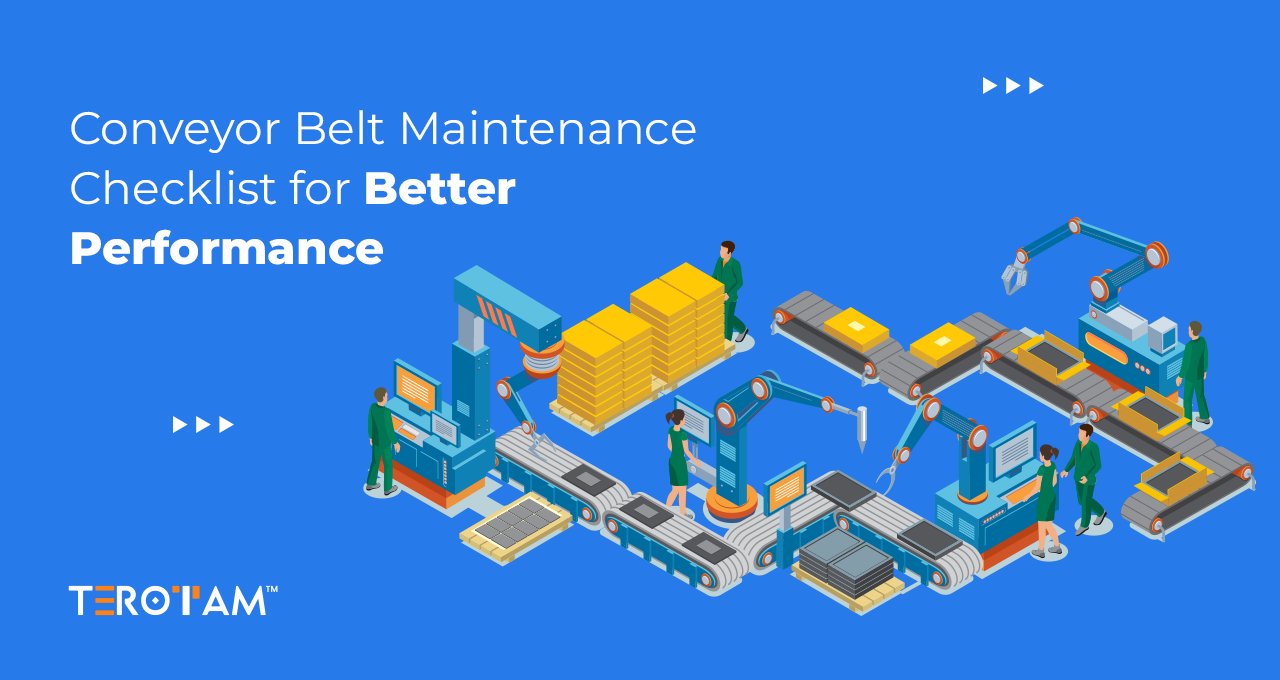Reactive maintenance is a widely recognized approach, often referred to as “run-to-failure” maintenance in the field of maintenance management. While it may seem straightforward, this method has significant implications for the efficiency and longevity of machinery and equipment.
In this article, we will explore the meaning of reactive maintenance, the methods used for the execution of it, and strategies for breaking the reactive maintenance cycle to practice a more streamlined and proactive approach towards maintenance management.
Let’s get started.
What is Reactive Maintenance?
Reactive maintenance is a strategy where maintenance tasks are performed only after equipment or machinery has failed. Unlike preventive or predictive maintenance, which aims to prevent failures, reactive maintenance addresses issues as they occur.
This approach can be cost-effective in the short term but often leads to higher long-term expenses due to unplanned downtime, emergency repairs, and potential collateral damage to other system components.
What Does Reactive Maintenance Include?
Reactive maintenance tackles equipment issues as they happen. It involves quick fixes to keep things running, followed by proper repairs, ensuring safety and minimizing downtime.
Immediate Response to Equipment Failures
Reactive maintenance involves addressing equipment failures as they occur, focusing on immediate detection and diagnosis of issues. When a failure happens, maintenance personnel quickly troubleshoot and implement emergency repairs to restore functionality, often using temporary fixes to keep operations running. These quick fixes are followed by more comprehensive permanent repairs once the immediate operational needs are met, ensuring long-term reliability and safety.
Assessing and Addressing Component Failures
Replacement of failed components is another crucial aspect of reactive maintenance. This involves assessing the damage to determine whether repair or replacement is more viable, sourcing the necessary parts quickly, and installing them to minimize downtime.
Implementing Temporary Solutions During Repairs
It also deals with temporary bypass solutions that may be employed to maintain system functionality while repairs are underway, ensuring continued operation with minimal disruption.
Managing Spare Parts and Safety Protocols
Effective spare parts management is essential for successful reactive maintenance. This includes maintaining an inventory of critical spare parts, establishing reliable supplier relationships, and ensuring parts are stored properly and easily accessible.
Thorough documentation and reporting of all maintenance activities help analyze trends, improve future practices, and make informed decisions. Adhering to stringent safety protocols protects maintenance personnel and other employees during emergency repairs and replacements.
Methods of Reactive Maintenance
Reactive maintenance is definitely a proto-type activity that can be done as it comes. It can be executed through several methods, each tailored to address failures promptly and effectively. The method will be decided and employed based on the problem and its nature.
Let’s understand it quickly with two major parts—repair and replacement.
1. Emergency Repairs
Emergency repairs involve immediate troubleshooting and quick fixes to restore equipment functionality after a sudden failure. Maintenance personnel quickly diagnose the issue, implement temporary solutions to minimize disruption, and plan for a permanent fix. This method prioritizes rapid response to keep operations running while ensuring safety and compliance.
- Immediate Troubleshooting: Quick diagnosis of the failure.
- On-the-Spot Fixes: Temporary solutions to restore functionality.
- Permanent Solutions: Planning and executing comprehensive repairs.
2. Replacement
When repairs are not feasible or cost-effective, replacing the failed component or the entire equipment becomes necessary. This method involves assessing the damage, sourcing the correct replacement parts, and installing them. The goal is to restore full functionality with minimal downtime, ensuring the new parts or equipment work reliably through thorough testing.
- Assessment of Damage: Evaluating whether repair or replacement is needed.
- Sourcing Replacement Parts: Quickly obtaining the necessary parts.
- Installation and Testing: Installing new parts and verifying functionality.
3. Temporary Bypass
Setting up a temporary bypass allows operations to continue while the main equipment is being repaired. This involves designing and implementing an alternative pathway for materials, power, or data flow. The bypass must be safe and efficient, enabling the main equipment to be fixed without halting production. Once repairs are complete, normal operations are carefully restored.
- Designing the Bypass: Creating an alternative pathway.
- Implementing the Bypass: Safely installing the temporary bypass.
- Restoring Normal Operations: Transitioning back after repairs.
4. Reactive Spare Parts Management
Effective spare parts management ensures that necessary parts are readily available for quick repairs. This involves maintaining an inventory of critical spare parts, establishing reliable supplier relationships for prompt delivery, and organizing parts for easy access. Proper storage and accessibility help minimize downtime by ensuring maintenance personnel can quickly locate and retrieve needed parts during emergencies.
Advantages of Reactive Maintenance
- Initial Cost Savings: Since there are no preventive measures taken, initial costs are lower.
- Simple to Implement: Requires no advanced planning or scheduling.
- Effective for Non-Critical Equipment: Suitable for equipment whose failure does not significantly impact operations or safety.
Disadvantages of Reactive Maintenance
- Unplanned Downtime: Equipment failure can halt operations, leading to productivity losses.
- Higher Repair Costs: Emergency repairs are often more expensive than planned maintenance.
- Shortened Equipment Lifespan: Continuous operation until failure can reduce the lifespan of machinery.
- Safety Risks: Equipment failures can pose safety hazards to workers.
Breaking the Cycle of Reactive Maintenance
While reactive maintenance can address immediate issues, it is not a sustainable long-term strategy. Transitioning to a more proactive maintenance approach can enhance operational efficiency, reduce costs, and extend equipment lifespan.
Here are some strategies to break the cycle of reactive maintenance:
Implementing Preventive Maintenance
Preventive maintenance involves regular, scheduled maintenance tasks designed to prevent equipment failures. This approach includes:
- Routine Inspections: Conducting regular inspections to identify potential issues before they lead to failures.
- Scheduled Servicing: Performing maintenance tasks, such as lubrication, cleaning, and part replacements, at set intervals.
- Historical Data Analysis: Using historical maintenance data to identify trends and schedule preventive actions accordingly.
Adopting Predictive Maintenance
Predictive maintenance leverages advanced technologies to predict equipment failures before they occur. This approach includes:
- Condition Monitoring: Using sensors and monitoring tools to track the condition of equipment in real time.
- Data Analysis: Analyzing data from monitoring tools to predict when failures are likely to occur.
- Timely Interventions: Scheduling maintenance tasks based on predictive data to prevent unexpected failures.
Training and Education
Educating maintenance personnel on the importance of proactive maintenance and equipping them with the necessary skills and knowledge is crucial. This involves:
- Training Programs: Conducting training sessions to enhance the technical skills of maintenance staff.
- Knowledge Sharing: Encouraging the sharing of best practices and experiences among maintenance teams.
- Continuous Learning: Promoting continuous learning to keep up with advancements in maintenance technologies and methodologies.
Investing in Technology
Investing in advanced maintenance technologies can significantly enhance the efficiency and effectiveness of maintenance operations. This includes:
- Maintenance Management Software: Utilizing software to plan, schedule, and track maintenance activities.
- IoT and AI: Implementing Internet of Things (IoT) devices and artificial intelligence (AI) to monitor equipment conditions and predict failures.
- Automated Systems: Using automated systems for routine maintenance tasks to reduce the burden on human resources.
Conclusion
While reactive maintenance is simple and cost-effective in the short term, it can lead to significant long-term challenges, including unplanned downtime, higher repair costs, and safety risks. By adapting more proactive strategies such as preventive and predictive maintenance, organizations can break the cycle of reactive maintenance. Investing in training, technology, and a proactive maintenance culture can lead to improved operational efficiency, reduced costs, and extended equipment lifespan, ultimately driving long-term success.
Looking to have more insight or need to discuss anything? – Feel free to connect with our experts now or write us back at contact@terotam.com.








